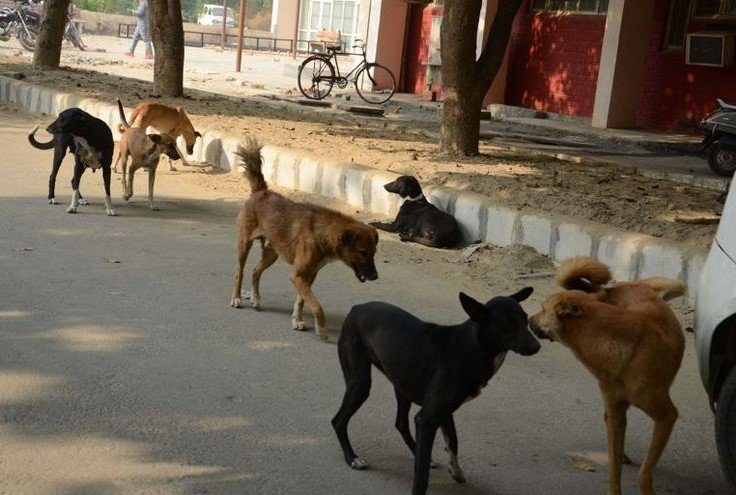Goa has stepped up after the Supreme Court’s recent directive to control stray dogs, setting up a task force to tackle the rising number of these animals, especially on its popular beaches. The state is aiming to strike a balance between public safety and animal welfare.
Goa’s rising stray dog challenge: a growing concern
The number of dog bite cases in Goa has jumped sharply in recent years—from 8,057 in 2022 to a staggering 17,236 in 2024. That’s more than double in just two years, a statistic that’s hard to ignore. For a state heavily reliant on tourism, especially its famous beaches, this surge is rattling both locals and visitors alike.
The spike in bites has brought the issue to the forefront. In a tragic incident in April, a one-year-old child in Ponda was mauled by a pack of stray dogs. Such incidents have sparked urgent calls for action.
Taking the Supreme Court’s August 11 order as a nudge, Goa’s government quickly formed a three-member task force charged with drafting and implementing a plan to “rehabilitate” stray dogs into shelter homes. The order, issued by the Directorate of Animal Husbandry and Veterinary Services, highlights cooperation with local civic bodies as key to success.
This task force is not just a formality. Goa’s Animal Husbandry Minister, Nilkanth Halarnkar, said they’re seriously looking for solutions. “We want to find a way forward that’s best for citizens,” he told The Indian Express. Consultation with the Chief Minister is on the cards too, signaling political will behind the effort.

Tourism industry flags the problem: dogs on the beaches
Goa’s tourism stakeholders have been sounding alarms about stray dogs wandering the beaches, a prime attraction for millions of visitors every year. Their presence not only raises safety concerns but also threatens the state’s image as a relaxed, tourist-friendly destination.
Local businesses and tourism operators recently met with government officials to highlight the increasing number of strays on popular beaches like Baga, Calangute, and Anjuna. They worry about tourists’ safety, especially families and solo travelers, who might be vulnerable to dog attacks.
One business owner said, “It’s not just about bites. Stray dogs sometimes chase or scare visitors, especially during peak season. It hurts our reputation and business.” Others voiced concerns about hygiene and stray dogs scavenging through trash.
The tourism sector’s input pushed authorities to move faster. The task force’s plan includes working closely with these stakeholders to ensure that popular tourist spots remain safe and welcoming.
What’s the plan? Shelter homes and collaboration
The task force’s mandate is clear: create a comprehensive action plan for the rehabilitation of stray dogs. That means catching, vaccinating, sterilizing, and relocating dogs to shelter homes.
The government’s order stresses cooperation with municipal bodies — a critical factor since stray dog populations tend to cluster in urban and semi-urban zones. This local involvement is necessary for managing logistics and community outreach.
Here’s a quick look at the approach Goa seems to be taking:
-
Identification of hotspots with high stray dog populations
-
Capture and transportation of animals to shelters
-
Vaccination and sterilization programs to control growth
-
Awareness campaigns educating locals and tourists on safety
-
Coordination between Animal Husbandry, municipal authorities, and NGOs
Such a multi-pronged approach isn’t new in India. Cities like Mumbai and Bangalore have similar initiatives, though success varies widely based on local commitment and resources.
Why is this a tricky problem?
Stray dogs are part of India’s urban fabric, and dealing with them isn’t as simple as rounding them up. Animal welfare activists argue that many strays were once pets or abandoned and deserve humane treatment.
Plus, shelters in many parts of India are overcrowded and underfunded. Without adequate resources, relocated dogs often face poor living conditions, raising ethical concerns.
Balancing public safety with compassion is the real challenge. Goa’s task force must tread carefully — aggressive culling would cause backlash, but inaction means more bite cases.
Experts also warn that sterilization and vaccination campaigns require sustained effort over years to make a dent in stray populations.
Nilkanth Halarnkar hinted at this complexity, saying the task force would “get some ideas” before finalizing its action plan.
Looking ahead: what can residents and tourists expect?
For now, Goa’s residents are watching closely as the government moves to implement the Supreme Court’s directive. The hope is that safer streets and beaches will emerge without sacrificing the wellbeing of the animals.
Tourists, on the other hand, can expect some changes around hotspots. They should stay alert, avoid feeding or approaching strays, and report any aggressive dog behavior to local authorities.
Public awareness campaigns are likely to roll out soon. The government also hopes to engage NGOs specializing in animal rescue to help with the shelters and outreach.
The road ahead won’t be easy, but Goa’s swift response signals it’s taking the problem seriously. Whether the task force can tame the stray dog issue without rattling the state’s tourism charm remains to be seen.
